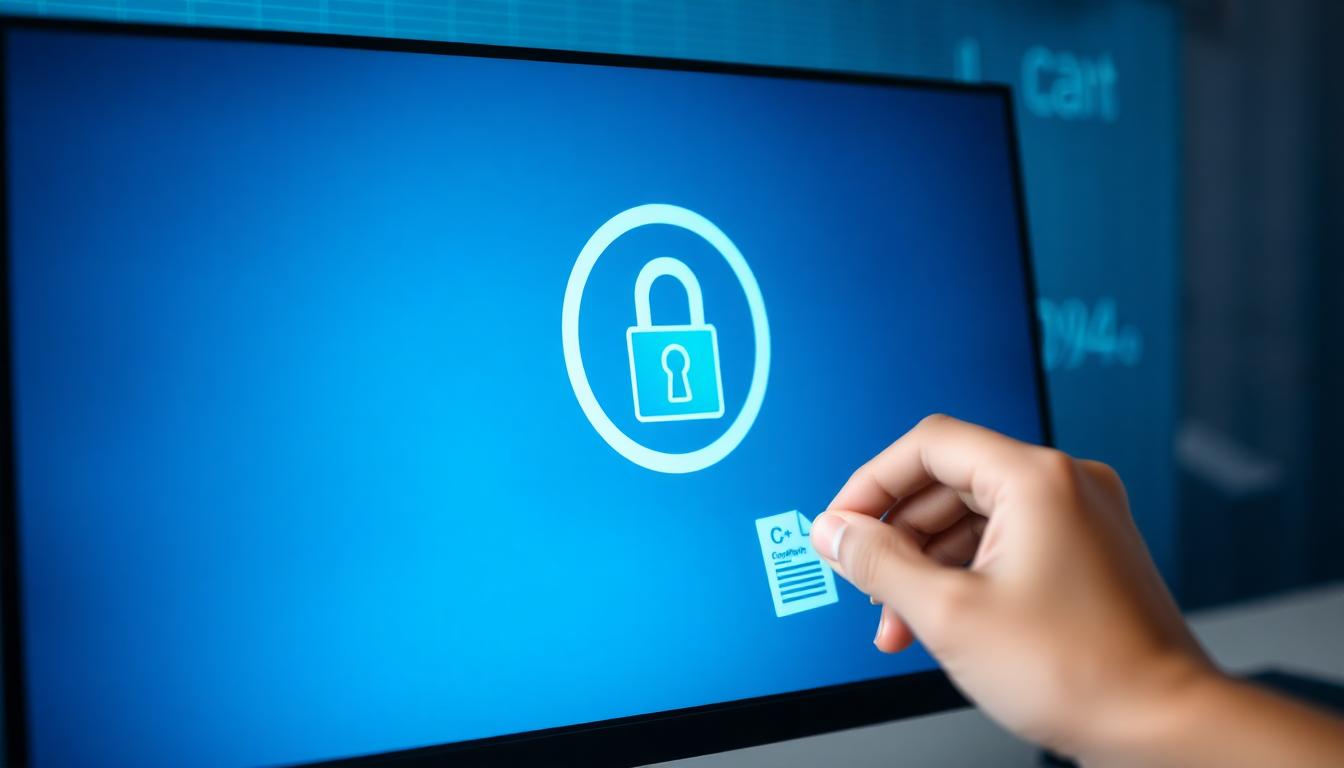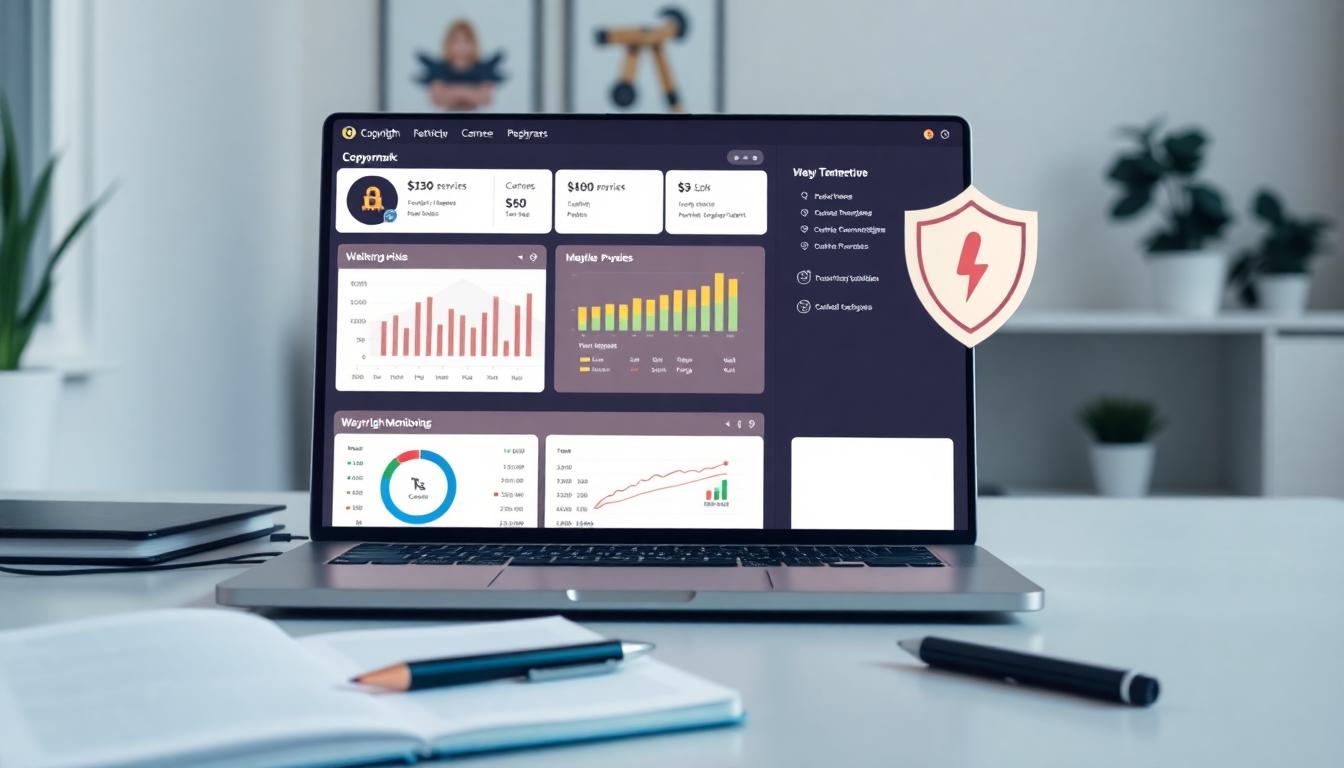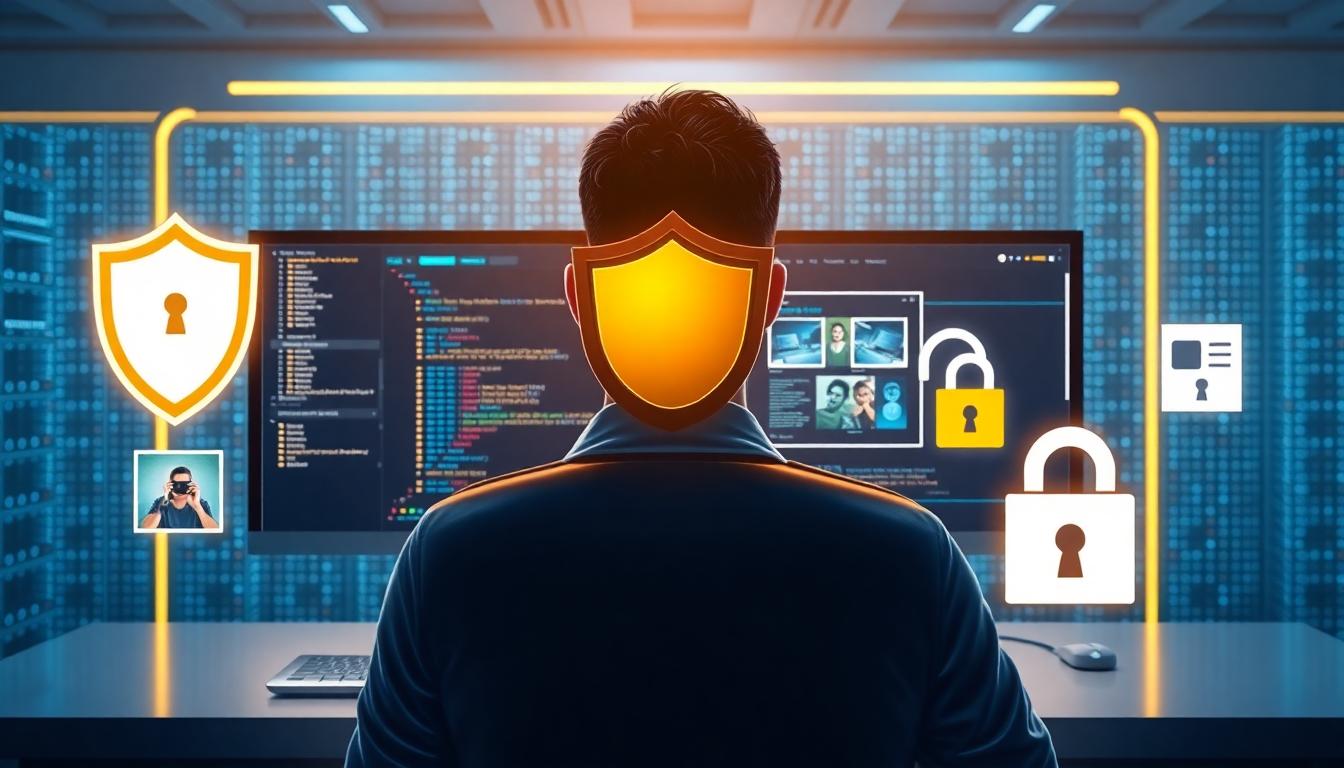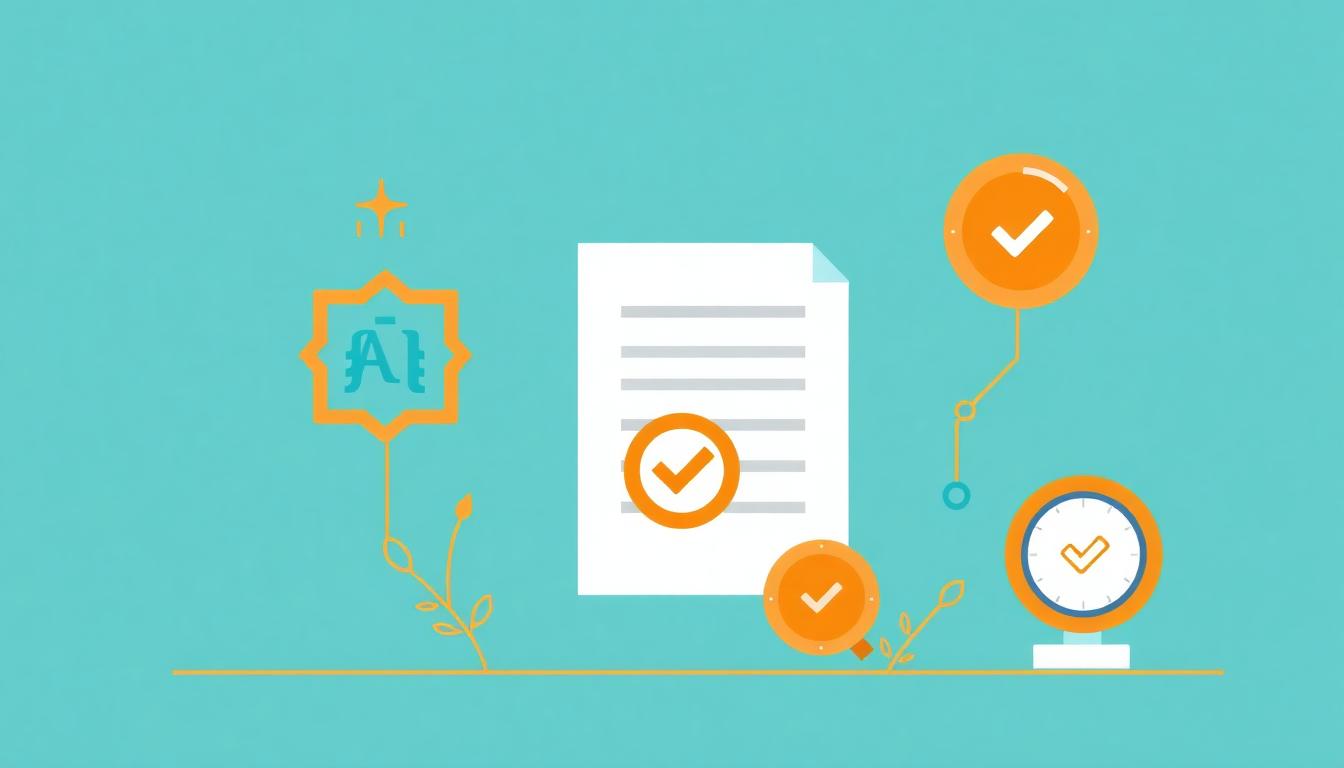How to Protect Your Original Work Online (Legal, Technical, and Monitoring Tips for 2025)
In 2025, protecting your original work online has never been more important. Content theft can drain your website’s traffic, hurt your search rankings, and damage your reputation. Copying happens fast and often without warning, so relying on just one method to protect your work isn’t enough. A strong defense combines legal steps, technical tools, and regular monitoring to keep your creations safe and your brand intact.
Establishing Strong Legal Foundations
Protecting your original work online starts with building solid legal groundwork. While your creativity is automatic legal property the moment you create it, taking formal steps gives you stronger control and protection. These foundations make it easier to stand up against theft and misuse. The following key practices will empower you with the right tools to defend your rights confidently.
Copyright Registration and Notices
Automatic copyright gives you basic rights from the moment of creation, but registering your work with an official authority like the U.S. Copyright Office takes protection to the next level. Registration creates a public record proving your ownership, which can be crucial if someone tries to steal or claim your work. More importantly, timely registration gives you the right to seek statutory damages and attorney’s fees in court without having to prove the actual harm caused by infringement. This ability to pursue stronger legal remedies acts like a powerful shield.
Including a clear copyright notice on your work is another simple but effective way to assert ownership. The standard format includes the copyright symbol ©, the year of first publication, and the name of the copyright owner. For example:
© 2025 Jane Doe
This little line visible on your website, images, videos, or documents serves as a warning sign to would-be infringers. It clearly signals that your work is protected and that you are actively claiming your rights. This reduces accidental copying and can help establish evidence of your claim if disputes arise.
Finally, don’t overlook adding intellectual property clauses within your Terms and Conditions page on your website. Clearly stating that your content is protected by copyright and outlining allowed uses sets upfront legal expectations for visitors and customers. Combined with other policies like Privacy Policy and Disclaimers, this builds legal clarity and trust with your audience.
For a deeper dive into copyright registration benefits, the U.S. Copyright Office provides detailed guidance.

Image created with AI, representing copyright registration and online content protection
DMCA Takedown Process
When you discover your content has been copied or used without permission online, the Digital Millennium Copyright Act (DMCA) offers an important enforcement tool. Filing a DMCA takedown notice is the primary legal step to have unauthorized content removed from websites or platforms.
The process begins by gathering clear evidence of infringement—screenshots, URLs, timestamps—and confirming the hosting provider or platform responsible for the infringing content. A well-written takedown notice must include:
- Your contact information and physical or electronic signature
- Identification of the original copyrighted work
- Identification of the infringing material (usually URLs)
- A statement declaring good faith belief of unauthorized use
- A statement verifying the accuracy and your authority to act under penalty of perjury
Sending this notice to the hosting provider initiates a timed response. In 2025, most reputable platforms typically act within 24 hours to one week, removing or disabling access to the infringing content if the notice meets legal standards. However, some cases or smaller services may take longer, sometimes up to several weeks.
Professionalism and accuracy are essential during this process. A vague or incomplete notice can delay removal or even discredit your claim. Keep a record of all communications and responses, as this documentation is valuable if legal action becomes necessary.
It’s important to understand that the DMCA takedown primarily results in content removal—not financial compensation. It’s the first line of defense, clearing stolen work off the web promptly and visibly asserting your rights.
For practical guidance, see The Ultimate Guide to Filing a DMCA Takedown Request in 2025 and current insights on how fast DMCA takedowns work.
Establishing these legal foundations equips you with clear, enforceable ways to protect your original work. From formal registrations to well-prepared DMCA notices, these steps turn your creations into rights backed by law—ready to be defended.
Technical Measures to Deter Theft
When it comes to protecting your original work online, technical measures create visible and invisible barriers to theft. These tools don't just slow down copycats—they send a clear message that your content is yours. Using a combination of these approaches helps safeguard your images, videos, text, and audio, giving you solid proof of ownership and extra layers of control.
Watermarking and Metadata
Visible watermarks are like signing your name across your work, holding up a bright flag that says, "I own this." Adding a clear logo, website URL, or text watermark to your images and videos makes it harder for others to snatch your content without notice. The trick is to place watermarks where they don't ruin the view but remain hard to crop out. For videos, consider dynamic watermarks that move subtly with the frame. This continual presence discourages thieves and protects your creative effort.
Beneath the surface, metadata acts as a secret vault of proof. Embedded within your files, metadata holds creator information, copyright notices, creation dates, and other vital details. This hidden record travels invisibly with your content, making it easier to prove ownership later—even if someone reposts or edits your work. Most image and video editors support metadata embedding without degradation to quality. Just keep in mind, some platforms may strip this data during upload, so always keep your original files and registrations handy.
Using both watermarks and metadata together gives you a visible shield and a hidden fingerprint, which combined create a strong case for your ownership. For more depth on how watermarking protects sensitive data and content authenticity, sources like DataPatrol's Ultimate Guide on Watermarking and Best Practices for Watermarking Dynamic Content offer valuable insights.

Photo by AI-generated, depicting watermarking on images and video content
Disabling Copy Functions and DRM
Sometimes adding obstacles stops casual theft before it begins. Disabling right-click menus and text selection on your website reduces the ease of copying images or text at a glance. This won’t stop determined thieves but it raises the effort required, making your site less appealing for quick grabs. Just balance this with accessibility; overly aggressive blocks can frustrate legitimate users who want to interact with your content in reasonable ways.
For a firmer line of defense, Digital Rights Management (DRM) technologies put restrictions on how your video and audio content can be played, copied, or shared. DRM encrypts media files and enforces rules like preventing downloads, screen recording, or sharing across unauthorized devices. It acts like a locked safe for your media assets, helping to stop unauthorized redistribution across platforms. Keep in mind, DRM sometimes impacts ease of use, so thorough testing is important to maintain a good user experience.
Adding Content Delivery Networks (CDNs) enhances security by distributing media across multiple servers worldwide. CDNs help prevent hotlinking (when other sites embed your files directly) and can enforce licensing by region or device type. They also improve loading speeds, keeping paying users happy while putting technical barriers in front of content thieves.
To understand DRM further, Fortinet’s Digital Rights Management Explanation and VdoCipher's Video DRM Overview offer clear explanations on how DRM safeguards your creative media.
![]()
Photo by AI-generated, symbolizing DRM and network-based media protection
Putting It All Together
- Combine visible watermarks with detailed metadata for layered proof of ownership.
- Use simple copy-blocking scripts to discourage quick content grabs on your website.
- Apply DRM on sensitive video and audio files to limit unauthorized use.
- Distribute media via CDNs to improve delivery and security.
Together, these tools build a clear, technical perimeter around your work that both warns and slows down thieves. Your original creations deserve this level of protection to stay yours no matter where they roam online.
Monitoring and Responding to Infringement
Keeping a close eye on where and how your original work is being used is just as important as setting up protections. Without ongoing monitoring, unauthorized use can spread unnoticed, damaging your brand and diluting your ownership. When you do find infringement, responding swiftly with clear steps helps you reclaim control and discourage repeat theft. Here’s how to manage the process effectively.
Direct Contact and Enforcement Steps
When you discover that someone has taken your content without permission, the first step is often the simplest — reach out directly to the infringer. A polite but firm message can resolve many issues without escalation.
Start by sending a professional email or direct message briefly explaining that you own the material they have used and kindly ask them to remove it or provide proper credit. Give them a reasonable deadline, usually about 5 to 7 days, to respond or fix the problem.
If they ignore your request or refuse to comply, the next step is to file a DMCA takedown notice with the appropriate hosting service or platform. This legal request must clearly outline your ownership and identify the infringing content’s exact location. Most platforms respond quickly to valid DMCA notices, removing or disabling illegal copies within days.
Repeat or serious offenders who persist after this can require stronger measures. Many creators use cease-and-desist letters, which are formal legal warnings sent through an attorney. These letters clearly communicate potential legal consequences if theft continues. If that still doesn’t stop the infringement, consulting a lawyer about taking legal action may be necessary to protect your rights and recover damages.
This step-by-step approach balances professionalism with escalating force — aiming to protect your work without immediately resorting to costly or complex lawsuits.
Utilizing Platform Tools and Legal Resources
Most major online platforms have built-in tools for reporting copyright violations. These systems give creators an efficient way to flag stolen content and trigger platform-driven removals.
For example, social media networks like Facebook, Instagram, and Twitter provide straightforward copyright complaint forms where you can submit a DMCA notice online. Content hosting sites such as YouTube, Vimeo, and Medium also offer customized takedown procedures.
Taking full advantage of these platform-specific tools helps you act quickly and officially. The faster you report infringement, the quicker the content generally disappears, minimizing damage.
For ongoing monitoring, technology has advanced to include automated alerts that notify you when copies of your content appear on the web or social platforms. These tools let you stay ahead of unauthorized use without exhaustive manual searching.
When infringement is persistent or involves complex issues such as licensing disputes, it’s wise to work with legal counsel. Experienced intellectual property attorneys understand evolving copyright laws and platform policies. They can help draft contracts that clarify how others may legally use your work, reducing gray areas that lead to conflicts.
Keeping clear contracts and licenses on file also strengthens your position if you must enforce your rights later. It creates a paper trail showing that you granted or withheld permission, which courts and platforms rely on during disputes.
Together, platform tools and professional legal advice form a powerful defense system that supports quick resolutions and prevents repeat theft. For the latest on DMCA compliance and enforcement trends, see the Complete DMCA Compliance Checklist for Online Platforms in 2025 and The Ultimate Guide to DMCA Takedown Notices.

Image created with AI, showing copyright monitoring tools on a desktop setup.
Best Practices and Emerging Considerations for 2025
As technology shifts and new challenges appear, protecting your original work means staying one step ahead. The rules are changing, with AI-generated content rising and search engines refining how they judge originality. Your approach must blend clear rules for others using your content, smart SEO moves, and ongoing vigilance. This section walks through key practices and fresh ideas to keep your work truly yours in 2025.
Emphasizing Transparency and Originality in AI-Influenced Content
AI tools now help many creators produce content, but that brings risks alongside convenience. To keep your work safe, it’s important to maintain transparency about what is human-made and what is AI-assisted. This openness builds trust with your audience and search engines alike.
The best way to stay protected is to focus on unique insights, personal experience, and clear authorship. Think of your original work as planting a flag — AI can help build the road, but the flag marks your territory. By blending your voice and expertise, you avoid your content blending into AI-generated noise.
Emerging copyright concerns also call for caution. AI can accidentally replicate parts of copyrighted materials it has been trained on, raising tricky questions about ownership. Keeping detailed records of your original drafts and development process helps prove your role as the creator.
For deeper guidance on balancing AI use and SEO, this overview of SEO and AI-generated content in 2025 offers practical, ethical direction.

Image created with AI showing a digital shield protecting original online content
Secure Your First Publisher Advantage with Immediate Indexing
One of the most powerful moves you can make is to establish yourself as the first publisher of your content. When you publish, aim to get Google and other search engines to index your work immediately. This timing sends a strong signal that you hold the original claim.
Holding first publisher status protects you from copycats who repost your work later. Duplicate content can hurt SEO rankings and confuse search engines about which source to rank higher. If your work is indexed promptly, search engines reward your site with better visibility.
Quick indexing can be nudged along by:
- Submitting your URL directly in tools like Google Search Console
- Using sitemaps and internal linking to highlight new content
- Sharing your published work on authoritative social platforms for faster discovery
This practice blends technical action with understanding how search engines value originality.
Clear Licensing and Usage Policies for Third Parties
As your work gains attention, requests to use your content may increase. This can be a good thing but demands clear rules. Drafting explicit content usage policies lets others know what is allowed and what isn’t — saving disputes later.
Explicit licensing terms specify whether your work can be reused, modified, or redistributed. Creative Commons licenses or custom agreements can serve this purpose well. If you charge for repurposing your work or need credit lines, spell those out clearly.
Place these policies prominently on your site, ideally linked near your content or in the footer. This transparency guides respectful use and strengthens your legal footing if misuse happens.
More insights on protecting content from AI scraping and misuse are detailed in 6 Tips for Protecting Your Content in the Age of GenAI.
Keep Watch and Layer Your Protections
Finally, no single method is foolproof. The best defense mixes legal protections, technical tools, and constant monitoring. Keep logs, archive your work frequently, and use content monitoring tools to detect unauthorized copies quickly.
Watch for new threats as AI tools and content platforms change regularly. Regularly update your approach to include recent legal precedents, platform tools, and emerging technologies.
This layering of protections acts like locks, alarms, and patrols working together to keep your work safe around the clock.
Use a combination of alerts, takedown notices, clear licensing, and SEO strategies to maintain control. These layered methods make it harder for thieves to succeed and easier for you to fight back.
Protecting your original work in 2025 means mixing clarity, speed, and vigilance. By focusing on transparency with AI, securing first publisher status, setting clear usage policies, and constantly monitoring, you build a strong buffer against theft. Your content’s value comes from its originality — keep that flame burning bright.
For SEO-specific insights, see How to Avoid Duplicate Content Issues with AI-Written Text and The Complete Guide to Google Ranking Factors for Web.

Image created with AI illustrating content originality verification and search indexing
Conclusion
Protecting your original work online requires a mix of clear legal rights, smart technical barriers, constant vigilance, and fast response to misuse. No one method alone can keep your content completely safe, but combining copyright registration, watermarking, DRM, monitoring tools, and clear licensing builds a strong defense.
Stay ahead by documenting your creation process, claiming your first publisher advantage, and using platform takedown systems promptly. As technology and laws change, staying informed and updating your protections keeps your content secure.
Your creativity deserves protection that works day and night. Holding your ground with layered, practical strategies turns the risk of theft into manageable challenges you control.















0 Comments:
Post a Comment